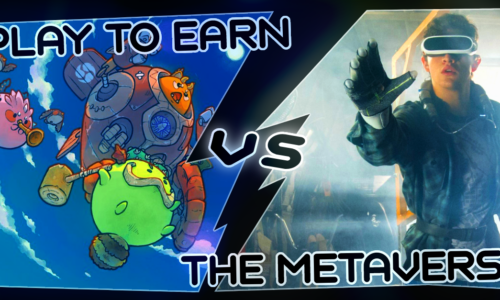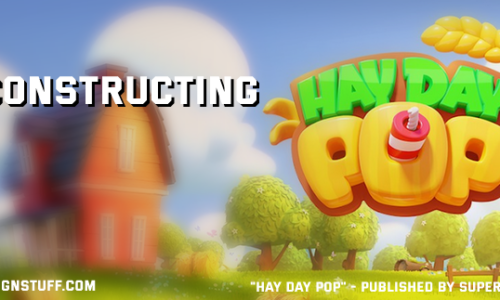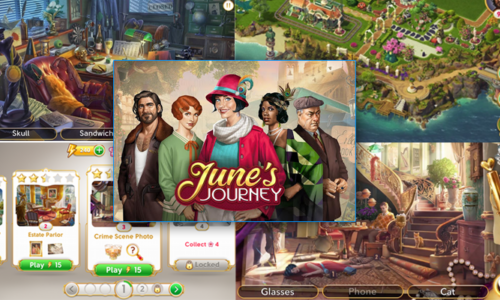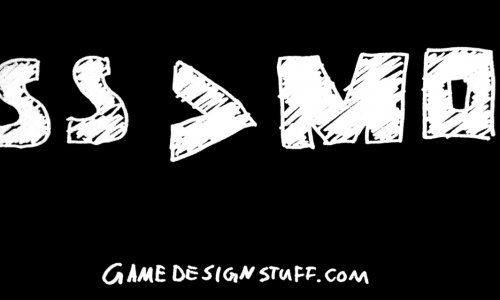In my previous post: “The Game Design Rabbit Hole” I have conducted my struggles with game design and it being not as a solid craft as I wish it was. This is yet another attempt to shed some light into the dark. And of course, this merely reflects my own opinions and learnings.
In this article, I will flesh out how games work and what makes them so engrossing. To do this, I build my case on the works of Raph Koster’s “Theory of Fun” And Daniel Cooks’ “Feedback System”.
Fun = Learning
Raph Koster’s “Theory of Fun” is that the source of all fun is learning. Confronting the player with a challenge and giving her the capabilities to overcome it. It’s a task for the brain to figure out through an iterative process in which players refine their strategies up to the point where they are able to overcome the opposed obstacle. I want to dive into that a bit more and share my thought on how exactly this approach can help to take apart the process of designing games into more tangible pieces.
The Game -Loop
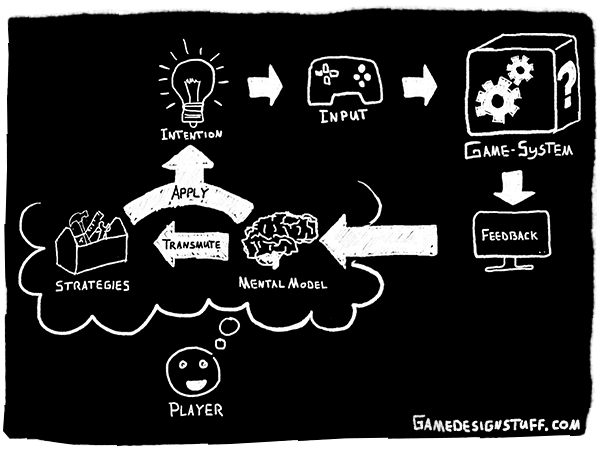
The player and the game are communicating with each other. The player speaks the “language” of input and the game answers with “feedback”. Players then form a mental model of the game system and the inner working of its parts. Through Inputs, they can modify parts of that system. The game will then alternate its current state and communicate that change to the player. These Inputs can be intentional, if the player has already learned what the resulting state change can be, or experimental if the player is still figuring out that part of the game. Either way, the feedback system will inform the player about the impact of these inputs and the player can validate it. Even more importantly, the players gain knowledge about how the game-system works and can in turn, update her understanding of the game-system. The intention is informed by goals which either emerge intrinsically in the players mind, or the game can explicitly give these goals extrinsically. More extrinsic goals are better for the early game when players still need assistance in learning the basics of the game. Extrinsic goals, if rewarded properly, will align with intrinsic goals eventually. “Reaching level 90” in an RPG is an extrinsic goal, while “I want to become more powerful” is an intrinsic goal. Ideally, they match, but first players have to learn that leveling up makes them more powerful. With that, the next loop of the feedback cycle starts. Every iteration of that cycle is an opportunity for players to learn. If the players knowledge of the games system has been established well enough (by running the feedback loop a sufficient number of times) the inputs players make can become intentional towards the desired game-state. The “desired game-state” can be an explicit goal stated within the game (e.g. finish a level) or a player-internal goal (I want to build a nice city). Throughout a game, the players understanding of the increases and a well-paced game will alternate between applying and learning strategies.
Strategies & Goals
I use the word strategy very broadly in this text and it means the following:
“A strategy is the intentional alternation of the game state through a sequence of inputs that lead to a desired state”.
The “desired game state” implies an intention on the player’s side. She wants the game to do something specific, so she uses her knowledge of the game to manipulate it. It is somewhat related to what Daniel Cook describes as “Skill Atom”. Although a “strategy” in this text can describe the usage of multiple “Skill Atoms” to achieve a particular result within the game world.
This definition can be applied to all levels of a game system. From a simple mechanics e.g.
- Press the jump- button at the right velocity & position to perform a jump collect a pickup in Platformers
- Placing units behind cover so they receive less damage in XCOM, spread units to mitigate Alien-AoE Damage
- Throw a smoke grenade into a tunnel to deny an enemy rush in Counterstrike
- Only shoot in small burst to maintain accuracy (FPS with recoil mechanic)
- Place an observer at the enemy base to gain high ground vision ( Starcraft 2)
- Find the biggest match in order to get the biggest possible cascading effect (Candy Crush)
- Deploy skeletons first when attacking an enemy base (Clash of Clans)
- Spend all of the mana in a turn in Hearthstone
- Defending enemy attacks in a Beat’em’up
- Execute headshots for increased damage
- Stock up on pokeballs before leaving a town
To more complex ones– these strategies require a deep understanding of a games systems and require some iterations of the feedback cycle before they have been formed and mastered
- Find efficient city layouts to maximize population happiness and thereby tax income
- Min-Maxing Character stats in an MMO
- Building a deck in Hearthstone around a new card
- Using certain attacks to force the opponent into a bad position and then exploit that weakness with a finishing move/combo
- Only pick up the most valuable goods in “This war of Mine’s” scavenging mode
The skill a player uses to execute a strategy varies greatly from genre to genre. Executing a headshot requires accurate mouse movement & reaction time while placing buildings efficiently requires strategic thinking. Both are strategies that work towards a goal in the context of their game. The applicability of this model to almost all genres makes it such a powerful. Learning strategies and combining them is what makes games entertaining and what keeps them challenging – given that the game provides more complex goals and deeper systems to interact with. A game becomes boring when there is nothing new to learn, or there is no incentive to combine learned strategies to reach more complex goals. This can be achieved by either increasing the depth or the complexity of the mechanics. Players attempt a solution of the goal with a certain strategy. The game will inform the player whether the attempt was successful or not. This iterative process how learning works and is engraved into the human brains by rewarding its success. When it comes to difficulty I consider creating challenges that gives players the opportunity to show how smart they are rather than showing them that they are inadequate. I think this is exactly where the border between challenging and punishing difficulty lies, but that is a totally different topic in itself.
Actionable: “Look at the mechanics of your game and list possible strategies. Map these strategies to possible explicit and implicit goals. Validate whether all strategies are tested by the goals and whether some your mechanics are underrepresented in your strategies.”
In the players Mind
The player’s ability to act inside of the game context hinges on 3 aspects:
- Understanding the System: How much of the games system has been understood
- Understanding the Inputs: To what extent is the player aware of all the possibilities she has to interact with game-systems (not the physical inputs)
- Transmuting: Combining system-knowledge and input-knowledge to create a hypothesis about a new strategy: “I wonder if I can avoid taking damage by jumping over that enemy”, depending on the target audience this part is either left to the player through experimenting or has to be explained explicitly
- Applying: Ability to use acquired strategies to solve the games challenge
This perspective allows to break down “player skill” into more tangible parts that can be addressed individually. Especially the first 2 are directly under the control of the designers through good tutorials and an elegant pacing of introducing new game elements and systems.
The latter two are not in the direct control of the designers are they happen mostly in the players mind, but with proper guidance (e.g. highlighting vulnerable parts in a boss-fight) we can assist players in finding solutions. Games test the “Transmute” and “Apply” categories with the goals they present to the players. When a player solves a challenge, she has proven that she has mastered the strategies associated with that goal.
Actionable 1: “Understand how your games performs in teaching the systems (through feedback) and the inputs (possibly through tutorials). Ensure that the challenge matches the player’s abilities to transmute & apply (Flow). “
Actionable 2: “What strategies do you teach explicitly and which ones do you leave for the player to discover? Discovering new strategies is one of the most rewarding moments in a game, but leaving the player too helpless can lead to frustration.”
The Hook: Player Agency – Rewarding Curiosity
Players invest upfront into a game by buying, downloading and launching it. So the game starts with a small debt towards the player. We know what the player want in general (“A nice experience”). So it should be the games’ first task to repay that debt and give players something in return. The more we know about the target audience for a certain game, the more accurate we can deliver that. Introducing the players to the core principles of the game and letting her execute that and yield first successes (as in ascertaining the games systems by experiencing the feedback-loop) will hook the players and motivate them to further explore the game. How do we do that? We show them that their inputs have an impact and lay out breadcrumbs for players to discover and figure out. These breadcrumbs can be a piece of narration about the world, a new ability, a new enemy. Everything that rewards curiosity or that introduces new elements keeps the players interested. This spiral goes on as long as the game actually makes the effort to encourage the players’ curiosity. At no point, the game becomes a “no brainer”. The game always needs to promote progression.
Empowering players through learning and applying the knowledge/skills, conveys a sense of accomplishment and mastery which ultimately is the core of a game experience and is what hooks a player.
Games provide an obstacle (be it a QT in a “walking simulator” or a boss fight in Dark Souls), but also the tools to solve them. Beating a challenge is already rewarding in itself intrinsically. If the player has reached the intended game state by using the abilities the game has taught her she has a feeling of agency and power within the game world.

Despite the resentments from core gamers and even some stubborn game designers, “Heavy Rain” just works like “Dark Souls” in terms of player agency, Players are in control of the games system an progress through the game-world on behalf of their intentions and the resulting actions. And that progress is communicated through whatever extrinsic rewards the particular genre has to offer. A cut-scene (narrative reward), a level-up (power reward), a new level (content reward) etc.
Actionable: “Is the feedback for the mechanics clear enough so that the player know what consequences their actions have? Carefully consider what events in the game world are tied to the players input and what are systematically generated (e.g. by randomness)”
Conclusion
Many things in this article were “stating the obvious” for most designers out there. But my approach to these articles is more of a “What would I have liked to have known when I started designing Games”? I hope that this approach of dissecting the individual parts of the game experience will help to single out certain design challenges that we face along the way of creating awesome games.
My belief is, that the better I understand how games work and what drives players, the better I can “design” systems that fulfill a certain purpose: Bringing fun to players
PS: While writing this post, I discovered the video of a presentation about “Defining Gameplay: Between structure and chaos” that industry veteran Alexandre Mandryka (Ubisoft) was giving. It pretty much sums up everything that I wanted to say here and is a must see for any aspiring game designer IMO.



